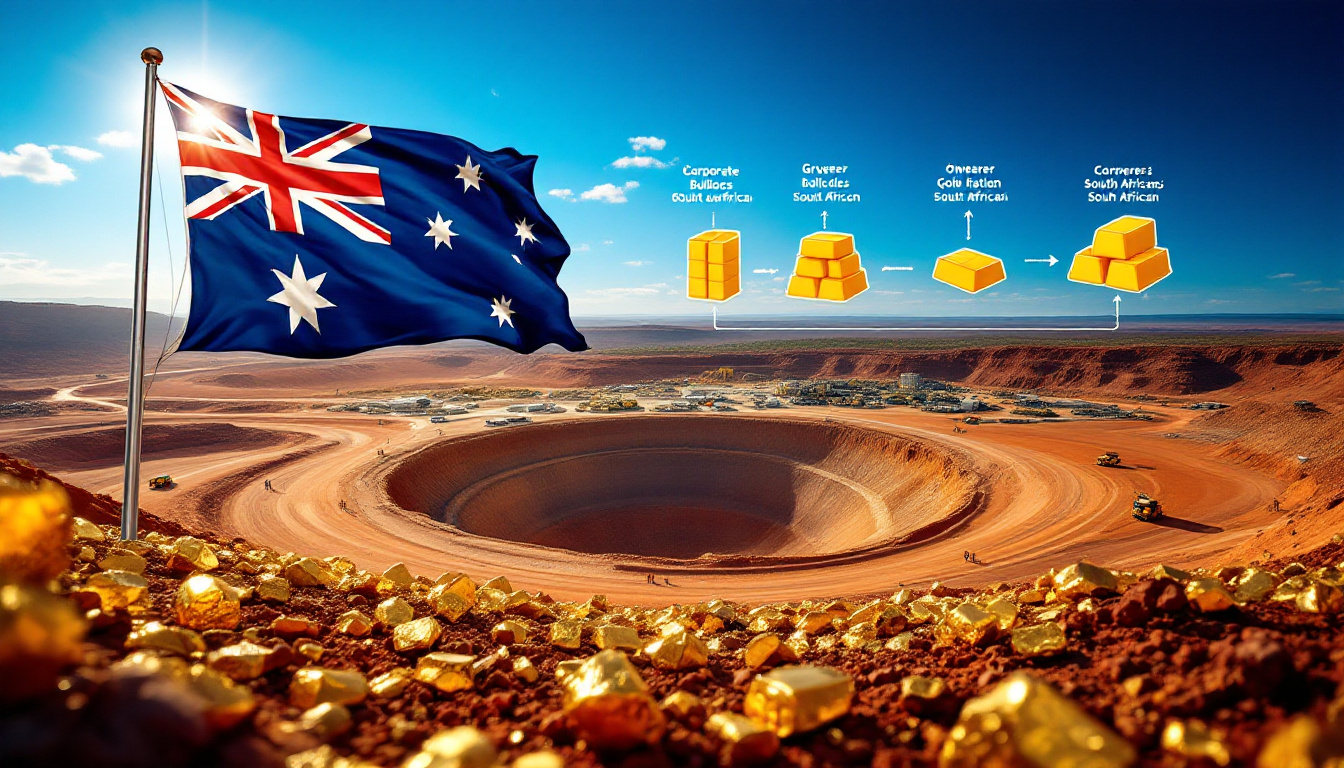Why is Mercuria Betting on Copper for Growth?
Mercuria, one of the world's largest independent energy and commodity trading companies, is making a strategic pivot toward copper trading in a bold expansion move. The Swiss commodities giant aims to elevate its metals division to match the scale and profitability of its established oil trading business, signaling a significant shift in its long-term strategy.
At the FT Commodities Global Summit, CEO Marco Dunand highlighted the company's "substantial investment in the metals sector," underscoring copper's critical role in Mercuria's growth ambitions. "There's lots of opportunity to pre-finance, co-invest, and secure supply in the metals sector," Dunand noted, pointing to the company's aggressive entry into this space.
The metals division's establishment in December 2023 through a strategic partnership with Zambia marked Mercuria's formal entry into copper trading. This partnership with Zambia's Industrial Development Corporation includes a $500 million pre-financing deal aimed at developing the nation's copper mining infrastructure. Zambia's copper production reached 830,000 tonnes in 2024, making it Africa's second-largest producer and a strategic foothold for Mercuria's expansion.
Copper's designation as a critical metal for the energy transition underpins Mercuria's strategic focus. With demand projected to grow 6% annually through 2030 according to the International Energy Agency, copper represents a high-growth market distinct from traditional energy commodities. Industry analysts note that "copper's role in electrification makes it a strategic play for traders diversifying from hydrocarbons."
The scale of Mercuria's ambition is evident in its volume targets – the company expects to move approximately 750,000 tonnes of copper cathode and 1 million tonnes of copper concentrate by 2025. This aggressive projection represents a significant share of the global copper market, especially for a newcomer in the metals trading space.
Of particular note is Mercuria's involvement with the Tenke Fungurume Mine in the Democratic Republic of Congo, which produces approximately 200,000 tonnes annually, representing roughly 8% of global copper supply. The mine, majority-owned by China's CMOC Group, has become a cornerstone of Mercuria's supply strategy.
With S&P Global projecting a 10 million tonne copper deficit by 2030, Mercuria's timing appears strategic. Similar to Rio Tinto's bold shift in copper investments, copper prices are expected to benefit from this supply-demand imbalance, potentially driving substantial profits for early-position traders with secured supply chains.
How Does Mercuria's Copper Strategy Compare to Competitors?
Mercuria's aggressive entry into copper trading directly challenges the long-established market dominance of industry giants Glencore and Trafigura, who have traditionally controlled the bulk of global copper trade flows. While Mercuria's metals division currently employs 70 staff, it competes against Trafigura's 1,000+ metals traders and Glencore's extensive mining and trading operations.
Kostas Bintas, who leads Mercuria's metals division, didn't mince words about the company's competitive approach: "We started big to disrupt Glencore's 30% market share." This ambitious stance comes despite Glencore's controlling interest in approximately 40% of Congo's copper exports, a significant barrier to new entrants in the market.
Other energy giants are similarly diversifying. Vitol Group, another major energy trader, is expanding its metals division but has initially focused on aluminum, trading approximately 2.5 million tonnes annually. This copper-versus-aluminum divergence highlights different strategic assessments of which metals will deliver optimal returns in the energy transition economy.
Smaller metals traders have struggled amid high energy prices and supply chain disruptions, creating an opening for well-capitalized newcomers. According to a Trafigura analyst, "Smaller traders lack capital to hedge price volatility, increasing consolidation" in the sector. This industry consolidation creates both challenges and opportunities for Mercuria's expansion plans.
The speed of Mercuria's growth is remarkable – recruiting 70 employees in just nine months since launching the metals division demonstrates both its commitment and financial resources. This rapid scaling indicates the company's determination to achieve critical mass quickly rather than growing organically over years.
In a strategic move that further entrenches its position, Mercuria renewed a deal with Glencore to buy copper from Congo's state miner Gécamines. This five-year offtake agreement secures 50,000 tonnes per year, representing both a collaboration with and challenge to Glencore's market position.
When comparing Mercuria's 2025 copper targets to Glencore's current volumes of 4.5 million tonnes, the ambition becomes clear – Mercuria isn't aiming for incremental growth but rather looking to become a top-tier player in a compressed timeframe.
What Specific Investments is Mercuria Making in Copper?
Mercuria's copper strategy extends beyond simple trading activities to include strategic investments across the value chain. The company has acquired a 15% stake in the Tenke Fungurume mine, valued at approximately $1.2 billion, demonstrating its commitment to securing physical supply through direct ownership.
This equity-for-supply approach has secured Mercuria 50,000 tonnes per year from Tenke Fungurume, providing both supply certainty and potential appreciation in the underlying asset value. As Bintas emphasized, "Mine acquisitions ensure physical flow, avoiding reliance on spot markets" – a critical advantage during supply disruptions.
Beyond mine ownership, Mercuria has allocated approximately $200 million to logistics upgrades in African copper corridors, addressing a critical bottleneck in getting copper from mine to market. These infrastructure investments include port facilities, rail optimization, and warehousing improvements in key export routes from the Copperbelt region.
The company's pre-financing model offers miners 12-18 month cash advances at 5-7% interest rates, providing critical working capital to mining operations while securing future production. This financing approach is particularly attractive in Africa's copper belt, where capital constraints often limit production capacity despite rich copper reserves.
Mercuria is building a diversified mine equity portfolio across multiple jurisdictions, including positions in five mines across Zambia and Chile. This geographical diversification reduces exposure to political risk in any single jurisdiction while capturing the unique advantages of different copper-producing regions.
The company's co-investment strategies with mining partners go beyond traditional offtake agreements to include joint development of new mines and expansion of existing operations. These partnerships often involve technical expertise alongside capital, helping to optimize production and ensure quality standards.
These multifaceted investments across mines, logistics, and financing demonstrate Mercuria's comprehensive approach to copper market entry – securing not just trading positions but controlling physical flows from mine to market.
What is Driving the Energy Giants' Return to Metals Trading?
Record-breaking profits in energy trading have provided the capital necessary for major expansions into metals. In 2024 alone, Vitol generated approximately $15 billion in profits, while Mercuria earned $6.2 billion – creating substantial war chests for strategic diversification.
The growing importance of copper in the energy transition represents perhaps the most compelling driver for this strategic shift. With each electric vehicle requiring approximately 83 pounds of copper compared to just 22 pounds for internal combustion engine vehicles, electrification is dramatically increasing copper intensity across the economy.
Goldman Sachs analysts predict that "copper's 'green premium' could hit $15,000 per tonne by 2030," representing significant upside potential from current price levels. This bullish outlook has encouraged energy traders to position themselves ahead of anticipated supply shortages.
Supply chain disruptions reduced 2024 copper output by approximately 3% in major mines, creating trading opportunities for companies with the capital and expertise to navigate volatile markets. These disruptions, ranging from political instability to technical challenges, have highlighted the value of secured supply agreements.
The global push for critical minerals has also elevated the strategic importance of copper in national security considerations. As governments increasingly classify copper as a strategic mineral, traders with established relationships in producing countries gain competitive advantages in securing supplies.
Diversification beyond traditional oil and gas trading provides a hedge against energy transition risks, as petroleum demand growth slows while metal demand accelerates. For companies like Mercuria, building significant positions in transition metals represents both offense and defense in a changing energy landscape.
The Cobre Panama dispute impacting global copper supply has further highlighted the importance of securing reliable sources, while potential challenges from navigating US tariff risks on the copper market add complexity to the trading environment. Glencore's 2023 acquisition of Teck Resources' copper assets for $9 billion demonstrates the premium valuations being placed on quality copper resources, reflecting the strategic imperative major traders feel to secure positions in this critical metal.
Who Leads Mercuria's Metals Trading Division?
Kostas Bintas serves as the head of Mercuria's metals and minerals division, bringing extensive industry experience and a reputation as a proven copper bull. Bintas previously co-led metals trading at Trafigura, where according to former colleagues, he "built Trafigura's zinc desk into a $2 billion revenue arm."
His compensation package, reportedly exceeding $4 million annually, reflects both his market value and Mercuria's commitment to attracting top-tier talent. This investment in leadership has quickly paid dividends in building credibility with producers, customers, and potential team members.
Bintas's strategy was clear from the outset: "start big, from day one" rather than gradually growing the metals business. This aggressive approach has resulted in the rapid recruitment of 70 team members within just nine months, many drawn from competitor trading houses and bringing established relationships and expertise.
His leadership team includes veterans from major mining companies and competing trading houses, creating a blend of physical mining expertise and sophisticated trading capabilities. This combination enables Mercuria to evaluate both trading opportunities and potential mine investments with equal sophistication.
Bintas's extensive network of relationships throughout the copper supply chain, from miners to refiners to end-users, has accelerated Mercuria's ability to secure key supply agreements. These personal connections, built over decades in the industry, represent a critical competitive advantage that can't be easily replicated.
The division's rapid expansion reflects Bintas's ability to articulate a compelling vision for Mercuria's metals business, attracting talent that might otherwise remain with established players. His reputation as a copper market specialist has been fundamental to Mercuria's credibility in the sector.
What Does This Mean for the Future of Copper Markets?
The entry of well-capitalized energy traders like Mercuria into copper markets is intensifying competition among major trading houses, potentially narrowing margins while increasing volumes. This competition could benefit miners through improved financing terms and higher premiums for guaranteed supply.
Citi Research projects copper prices reaching $12,000 per tonne by 2026, driven by structural supply deficits and accelerating demand from electrification. Mercuria's aggressive positioning suggests internal forecasts may be even more bullish on medium-term price potential.
Increased investment in copper mining and infrastructure is a likely consequence of trader competition, as companies like Mercuria deploy capital to secure long-term supply positions. These investments may help alleviate projected supply shortfalls, though development timelines for new mines typically extend 5-10 years.
Strategic partnerships between trading houses and copper-producing countries are evolving beyond simple offtake agreements to include development financing, technical assistance, and infrastructure investments. Mercuria's $500 million investment in Zambia, linked to the country's IMF loan compliance, exemplifies this trend toward more comprehensive relationships.
When comparing copper to other energy transition metals like lithium, copper offers traders higher liquidity, more established pricing mechanisms, and broader industrial applications – explaining why Mercuria prioritized copper over other critical minerals for its initial metals push.
The implications for copper supply security in the energy transition are significant, as aggressive trader positioning may accelerate mine development and improve supply chain resilience. However, competition for limited high-quality resources could also drive premiums for tier-one assets to unprecedented levels.
Chile's developments in copper smelting revolution and the broader trends in strategic impacts of copper mergers and acquisitions further illustrate the dynamic nature of the copper market that Mercuria is entering. Geopolitical considerations are increasingly influencing copper market dynamics, with producer countries leveraging critical mineral status for improved terms while consumer nations encourage domestic processing capacity. Mercuria's relationships across multiple jurisdictions position it to navigate these evolving dynamics.
FAQs About Mercuria's Copper Trading Expansion
What is Mercuria's current position in the copper trading market?
Mercuria aims to trade approximately 750,000 tonnes of copper cathode and 1 million tonnes of copper concentrate by 2025. While still smaller than established players like Glencore and Trafigura, Mercuria's rapid growth and strategic investments in physical assets have quickly established it as a significant market participant less than two years after launching its metals division.
How does Mercuria's approach differ from other major trading houses?
Unlike competitors who gradually built metals trading capabilities over decades, Mercuria has taken a "big bang" approach to market entry – rapidly building a large team, securing strategic mine stakes, and establishing relationships with key producers simultaneously. This comprehensive strategy contrasts with more focused approaches like Vitol's emphasis on aluminum rather than copper.
What regions is Mercuria targeting for copper investments?
Mercuria has initially focused on Central and Southern Africa, particularly Zambia and the Democratic Republic of Congo, while also establishing positions in Chile. This strategy balances exposure to the world's highest-grade deposits in Central Africa with the established mining jurisdiction of Chile, creating a geographically diversified supply portfolio.
How might Mercuria's expansion affect copper prices?
While increased competition for physical copper supply could initially support prices, Mercuria's investments in mine development and logistics could eventually increase overall market supply. The net impact depends on whether new production stimulated by trader financing outpaces growing demand from electrification and renewable energy expansion.
What challenges might Mercuria face in growing its metals division?
Key challenges include competing with established traders for limited high-quality supply, navigating the political complexities of major copper-producing regions, managing price volatility with a growing position, and integrating mining investments with trading operations. Additionally, attracting and retaining specialized talent in a competitive market remains crucial to sustained growth.
Ready to Capitalise on the Next Major Copper Discovery?
Discover significant mineral announcements before the market with Discovery Alert's proprietary Discovery IQ model, which turns complex mining data into actionable investment opportunities. Explore why major discoveries like those in the copper sector can lead to substantial returns by visiting Discovery Alert's dedicated discoveries page and position yourself ahead of the market.




